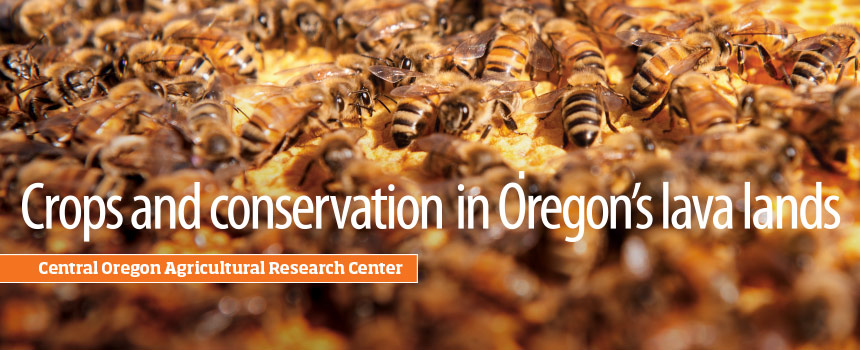Hive motivation

Every summer, white beehive boxes crop up in central Oregon fields. Millions of honey bees visit here as itinerant workers, pollinating carrot, onion, and parsley flowers and helping to produce vegetable seed, valued at $21.5 million in 2012.
However, as it turns out, the pollens from carrot, onion, and parsley are not particularly appetizing to honey bees. To improve the appeal, OSU researchers tested a brood pheromone in hives to make bees sense there’s a large brood of larval bees that needs feeding. After four years, their data showed that hives with the pheromone worked harder and vegetable seed fields produced better yields.
[caption caption="Central Oregon is a global mecca for vegetable seed. Learn how Oregon State research has crafted a unique balance between honeybees, pheromones, irrigation, and farming to grow vegetable seeds better than almost anywhere in the world."] [/caption]
[/caption]
Low numbers of native pollinators make it necessary to import honey bees during flowering. Central Oregon is the last stop for touring beekeepers before readying their hives to overwinter. Research is just beginning on how bee nutrition relates to the health of hives after honey bees have worked a full season and are ready for a much-deserved rest.
“We are trying to help beekeepers make sure that their bees are nutritionally fit when their hives leave Oregon,” said Rhonda Simmons, a senior research assistant with vegetable seeds and cereals. “If bees are stressed, then they’re susceptible to diseases and invasion from pests.”
Keeping bees healthy might mean offering them a more balanced diet throughout the season. Since hives need a sizeable supply of honey before winter, OSU researchers are testing additional flowers planted at the edges to give bees another source of pollen while working crop fields.

